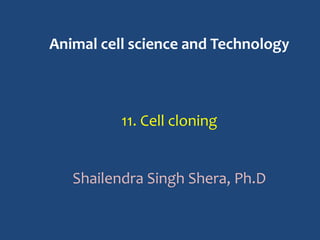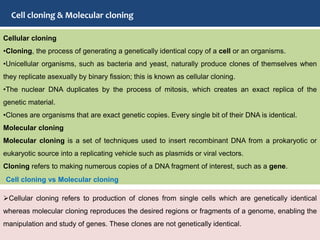The document discusses concepts of cell cloning and micromanipulation, detailing cellular and molecular cloning methods, including approaches like monolayer, suspension, and dilution cloning. It emphasizes the differences between cellular cloning, which produces genetically identical clones, and molecular cloning, which involves manipulating DNA fragments. Additionally, the document outlines micromanipulation techniques used in fields such as in vitro fertilization and provides practice questions for understanding these concepts.










